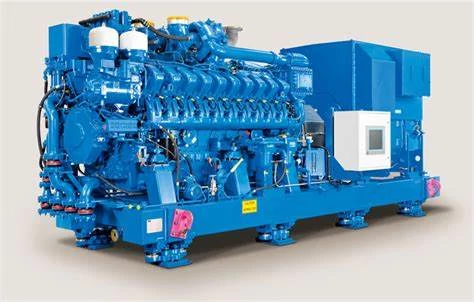Stationary Engine Compliance Assistance
Stationary internal combustion engines (ICE) are engines that combust fuel inside a confined cylinder(s) to produce mechanical power. The power can be used directly for equipment like pumps or compressors, or it could be used to power an electric generator to produce electricity.
Why Does EPA Regulate Stationary Engines?
Stationary internal combustion engines are common combustion sources that collectively can have a significant impact on air quality and public health. Emissions from ICEs are from fuel combustion and include carbon monoxide (CO), nitrogen oxides (NOx), volatile organic compounds (VOCs), particulate matter (PM), and air toxics.
Does My Stationary Engine Need a Permit?
Start by checking to see if your engine meets the definition of an emergency-use engine and is exempt from permitting. Permitting exemptions can be found in MCAPCO 1.5200 – "Air Quality Permits".
Unsure whether your ICE needs an Air Quality Permit? You can submit an air permit applicability determination using this form or contact MCAQ at 704-336-5430.

How Does MCAQ Regulate Stationary Engines?
MCAPCO Regulation 2.1111
"Maximum Achievable Control Technology" which references 40 CFR 63 Subpart ZZZZ – "National Emissions Standards for Hazardous Air Pollutants for Stationary Reciprocating Internal Combustion Engines"
MCAPCO Regulation 2.0524
"New Source Performance Standards" which references 40 CFR 60 Subpart IIII (Stationary Compression Ignition Internal Combustion Engines") and 40 CFR 60 Subpart JJJJ (Stationary Spark Ignition Internal Combustion Engines").
Large, Non-emergency Engines
MCAPCO 2.1400 Air Pollution Control Regulations and Procedures.
MCAQ Compliance Assistance
Emission Calculation Spreadsheets
Gasoline and Small Diesel Engines (≤ 600 hp)
Dual Fuel and Large Diesel Engines (> 600hp)
Monitoring and Recordkeeping
Tracking of hours of operation – tracking of hours shall include recording hours of operation for emergency use (when the normal utility power is out), non-emergency use (maintenance and testing), and if applicable, hours of operation for local utility demand response (aka peak shaving).
Maintenance records of the engine
Monitoring and recordkeeping operational data of add on controls, such as temperature and pressure of a catalyst (aka, continuous parameter monitors or CPMS).
Monitoring and recordkeeping of continuous emissions monitoring (CEMS) data.
Performance Testing
Typically required for non-emergency engines, large engines at Title V facilities or for engines that operate on a non-standard fuel (ex. digestor gas)
Reporting
Annual or semi-annual reports may be required depending on the engine's use and a facility's source classification (i.e., major sources)
EPA Compliance Assistance
There are many types of ICEs, based on fuel type (gasoline, diesel, NG, etc.) and other characteristics. The regulations are also dependent on the year the engine was manufactured (or re-manufactured). Some of the regulations are dependent on cylinder size, while others can depend on the type of cycle (2 cycle vs 4 cycle). A place to start is located here:
Understanding the Stationary Engines Rules | US EPA
There are various resources to assist you with understanding and complying with the regulations. EPA has developed a regulation navigation (Reg Nav) tool located here:
Guidance and Tools for Implementing Stationary Engine Requirements | US EPA

